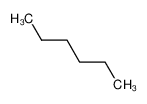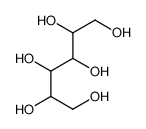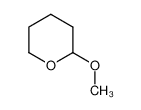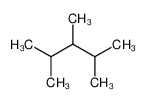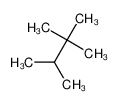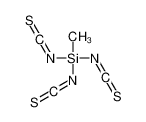1.Identification
1.1 GHS Product identifier
| Product name | Hexane |
|---|
1.2 Other means of identification
| Product number | - |
|---|---|
| Other names | n-Hexane |
1.3 Recommended use of the chemical and restrictions on use
| Identified uses | For industry use only. Hydrocarbons (contain hydrogen and carbon atoms), Volatile organic compounds |
|---|---|
| Uses advised against | no data available |
1.4 Supplier's details
| Company | MOLBASE (Shanghai) Biotechnology Co., Ltd. |
|---|---|
| Address | Floor 4 & 5, Building 12, No. 1001 North Qinzhou Road, Xuhui District, Shanghai, China |
| Telephone | +86(21)64956998 |
| Fax | +86(21)54365166 |
1.5 Emergency phone number
| Emergency phone number | +86-400-6021-666 |
|---|---|
| Service hours | Monday to Friday, 9am-5pm (Standard time zone: UTC/GMT +8 hours). |
2.Hazard identification
2.1 Classification of the substance or mixture
Flammable liquids, Category 2
Skin irritation, Category 2
Aspiration hazard, Category 1
Specific target organ toxicity – single exposure, Category 3
Specific target organ toxicity – repeated exposure, Category 2
Hazardous to the aquatic environment, long-term (Chronic) - Category Chronic 2
Reproductive toxicity, Category 2
2.2 GHS label elements, including precautionary statements
| Pictogram(s) |     |
|---|---|
| Signal word | Danger |
| Hazard statement(s) | H225 Highly flammable liquid and vapour H315 Causes skin irritation H304 May be fatal if swallowed and enters airways H336 May cause drowsiness or dizziness H411 Toxic to aquatic life with long lasting effects |
| Precautionary statement(s) | |
| Prevention | P210 Keep away from heat, hot surfaces, sparks, open flames and other ignition sources. No smoking. P233 Keep container tightly closed. P240 Ground and bond container and receiving equipment. P241 Use explosion-proof [electrical/ventilating/lighting/...] equipment. P242 Use non-sparking tools. P243 Take action to prevent static discharges. P280 Wear protective gloves/protective clothing/eye protection/face protection. P264 Wash ... thoroughly after handling. P261 Avoid breathing dust/fume/gas/mist/vapours/spray. P271 Use only outdoors or in a well-ventilated area. P260 Do not breathe dust/fume/gas/mist/vapours/spray. P273 Avoid release to the environment. P201 Obtain special instructions before use. P202 Do not handle until all safety precautions have been read and understood. |
| Response | P303+P361+P353 IF ON SKIN (or hair): Take off immediately all contaminated clothing. Rinse skin with water [or shower]. P370+P378 In case of fire: Use ... to extinguish. P302+P352 IF ON SKIN: Wash with plenty of water/... P321 Specific treatment (see ... on this label). P332+P313 If skin irritation occurs: Get medical advice/attention. P362+P364 Take off contaminated clothing and wash it before reuse. P301+P310 IF SWALLOWED: Immediately call a POISON CENTER/doctor/… P331 Do NOT induce vomiting. P304+P340 IF INHALED: Remove person to fresh air and keep comfortable for breathing. P312 Call a POISON CENTER/doctor/…if you feel unwell. P314 Get medical advice/attention if you feel unwell. P391 Collect spillage. P308+P313 IF exposed or concerned: Get medical advice/ attention. |
| Storage | P403+P235 Store in a well-ventilated place. Keep cool. P405 Store locked up. P403+P233 Store in a well-ventilated place. Keep container tightly closed. |
| Disposal | P501 Dispose of contents/container to ... |
2.3 Other hazards which do not result in classification
none
3.Composition/information on ingredients
3.1 Substances
| Chemical name | Common names and synonyms | CAS number | EC number | Concentration |
|---|---|---|---|---|
| Hexane | Hexane | 110-54-3 | none | 100% |
4.First-aid measures
4.1 Description of necessary first-aid measures
General advice
Consult a physician. Show this safety data sheet to the doctor in attendance.
If inhaled
Fresh air, rest. Refer for medical attention.
In case of skin contact
Remove contaminated clothes. Rinse and then wash skin with water and soap. Refer for medical attention .
In case of eye contact
First rinse with plenty of water for several minutes (remove contact lenses if easily possible), then refer for medical attention.
If swallowed
Rinse mouth. Do NOT induce vomiting. Rest. Refer for medical attention .
4.2 Most important symptoms/effects, acute and delayed
INHALATION causes irritation of respiratory tract, cough, mild depression, cardiac arrhythmias. ASPIRATION causes severe lung irritation, coughing, pulmonary edema; excitement followed by depression. INGESTION causes nausea, vomiting, swelling of abdomen, headache, depression. (USCG, 1999)
4.3 Indication of immediate medical attention and special treatment needed, if necessary
Ingestion: Do not induce vomiting. Skin or eyes: Wipe off; wash skin with soap and water; wash eyes with copious amounts of water.
5.Fire-fighting measures
5.1 Extinguishing media
Suitable extinguishing media
Stop discharge if possible. Keep people away. Shut off ignition sources and call fire department. Stay upwind and use water spray to "knock down" vapor. Isolate and remove discharged material. Notify local health and pollution control agencies.
5.2 Specific hazards arising from the chemical
Behavior in Fire: Vapors may explode (USCG, 1999)
5.3 Special protective actions for fire-fighters
Wear self-contained breathing apparatus for firefighting if necessary.
6.Accidental release measures
6.1 Personal precautions, protective equipment and emergency procedures
Use personal protective equipment. Avoid dust formation. Avoid breathing vapours, mist or gas. Ensure adequate ventilation. Evacuate personnel to safe areas. Avoid breathing dust. For personal protection see section 8.
6.2 Environmental precautions
Consult an expert! Personal protection: filter respirator for organic gases and vapours adapted to the airborne concentration of the substance. Remove all ignition sources. Do NOT wash away into sewer. Do NOT let this chemical enter the environment. Collect leaking and spilled liquid in sealable containers as far as possible. Absorb remaining liquid in sand or inert absorbent. Then store and dispose of according to local regulations.
6.3 Methods and materials for containment and cleaning up
In the event of spillage, naked flames, sparks, and heat should be avoided; approved, efficient, protective clothing and respirators should be provided. Small-scale spillage should be absorbed on paper towels or sawdust; sand or earth can be used for larger spills. Fire-fighting foam can be used in large spillages to reduce evaporation. If possible, liquid spills should be recovered for recycling.
7.Handling and storage
7.1 Precautions for safe handling
Avoid contact with skin and eyes. Avoid formation of dust and aerosols. Avoid exposure - obtain special instructions before use.Provide appropriate exhaust ventilation at places where dust is formed. For precautions see section 2.2.
7.2 Conditions for safe storage, including any incompatibilities
Fireproof. Separated from strong oxidants. Well closed.Drums should be stored in a well-ventilated area in fire-resistant containers. Metal containers should be electrically-grounded, when liquid is being transferred.
8.Exposure controls/personal protection
8.1 Control parameters
Occupational Exposure limit values
Recommended Exposure Limit: 10 Hour Time-Weighted Average: 50 ppm (180 mg/cu m).
Biological limit values
no data available
8.2 Appropriate engineering controls
Handle in accordance with good industrial hygiene and safety practice. Wash hands before breaks and at the end of workday.
8.3 Individual protection measures, such as personal protective equipment (PPE)
Eye/face protection
Safety glasses with side-shields conforming to EN166. Use equipment for eye protection tested and approved under appropriate government standards such as NIOSH (US) or EN 166(EU).
Skin protection
Wear impervious clothing. The type of protective equipment must be selected according to the concentration and amount of the dangerous substance at the specific workplace. Handle with gloves. Gloves must be inspected prior to use. Use proper glove removal technique(without touching glove's outer surface) to avoid skin contact with this product. Dispose of contaminated gloves after use in accordance with applicable laws and good laboratory practices. Wash and dry hands. The selected protective gloves have to satisfy the specifications of EU Directive 89/686/EEC and the standard EN 374 derived from it.
Respiratory protection
Wear dust mask when handling large quantities.
Thermal hazards
no data available
9.Physical and chemical properties
| Physical state | Colorless liquid with a gasoline-like odor |
|---|---|
| Colour | Liquid |
| Odour | Gasoline-like odor |
| Melting point/ freezing point | -95°C(lit.) |
| Boiling point or initial boiling point and boiling range | 69°C(lit.) |
| Flammability | Class IB Flammable Liquid: Fl.P. below 22.78°C and BP at or above 37.78°C.Highly flammable. |
| Lower and upper explosion limit / flammability limit | Lower flammable limit: 1.1%, Upper flammable limit: 7.5% (by volume) |
| Flash point | -26°C |
| Auto-ignition temperature | 233.89°C |
| Decomposition temperature | no data available |
| pH | no data available |
| Kinematic viscosity | 3.26X10-4 Pa-s at 20°C |
| Solubility | less than 1 mg/mL at 16.5°C |
| Partition coefficient n-octanol/water (log value) | log Kow = 3.90 |
| Vapour pressure | 120 mm Hg at 20°C ; 180 mm Hg at 25°C |
| Density and/or relative density | 0.659g/mLat 25°C(lit.) |
| Relative vapour density | ~3 (vs air) |
| Particle characteristics | no data available |
10.Stability and reactivity
10.1 Reactivity
no data available
10.2 Chemical stability
Stable under recommended storage conditions.
10.3 Possibility of hazardous reactions
Flammable. Flashback along vapor trail may occur.The vapour is heavier than air and may travel along the ground; distant ignition possible.HEXANE may be sensitive to light. It may also be sensitive to prolonged exposure to heat. This compound can react vigorously with oxidizing materials. This would include compounds such as liquid chlorine, concentrated O2, sodium hypochlorite and calcium hypochlorite. It is also incompatible with dinitrogen tetraoxide. It will attack some forms of plastics, rubber and coatings. .
10.4 Conditions to avoid
no data available
10.5 Incompatible materials
Forms explosive mixture with air. Contact with strong oxidizers may cause fire and explosions. contact with dinitrogen tetreoxide may explode at 28°C. Attacks some plastics, rubber and coatings. may accumulate static electrical charges, and may cause ignition of its vapor.
10.6 Hazardous decomposition products
When heated to decomposition it emits acrid smoke and fumes.
11.Toxicological information
Acute toxicity
- Oral: LD50 Mouse oral 5000 mg/kg bw
- Inhalation: LC50 Rat inhalation 48000 ppm/< 4 hr
- Dermal: no data available
Skin corrosion/irritation
no data available
Serious eye damage/irritation
no data available
Respiratory or skin sensitization
no data available
Germ cell mutagenicity
no data available
Carcinogenicity
EPA-II
Reproductive toxicity
No information is available on the reproductive or developmental effects of hexane in humans. Testicular damage has been observed in male rats exposed to hexane via inhalation. Teratogenic effects were not observed in the offspring of rats chronically exposed via inhalation in several studies.
STOT-single exposure
no data available
STOT-repeated exposure
no data available
Aspiration hazard
no data available
12.Ecological information
12.1 Toxicity
- Toxicity to fish: LC50; Species: Pimephales promelas (Fathead Minnow) age 31 days, length 20.4 mm, weight 0.123 g; Conditions: freshwater, flow through, 25.6°C, pH 7.4, hardness 44.7 mg/L CaCO3, alkalinity 43.9 mg/L CaCO3, dissolved oxygen 7.5 mg/L; Concentration: 2500 ug/L for 96 hr (95% confidence interval: 2100-2980 ug/L) /99+% purity
- Toxicity to daphnia and other aquatic invertebrates: EC50; Species: Daphnia magna (Water Flea) age 4-6 days, length 1.5 mm; Conditions: freshwater, static, 23°C, pH 6-7, dissolved oxygen 5-9 mg/L; Concentration: 45 mmol/cu m for 48 hr (95% confidence interval: 30-66 mmol/cu m); Effect: intoxication, immobilization /> or =97% purity formulation
- Toxicity to algae: EC50; Species: Chlamydomonas angulosa (Green Algae) age 3-4 days, exponential growth phase 5x10+4 cells/mL; Conditions: static, 19°C, pH 6.5; Concentration: 94 mmol/cu m for 3 hr; Effect: physiology, photosynthesis /formulation
- Toxicity to microorganisms: no data available
12.2 Persistence and degradability
The degradation of n-alkanes by microorganisms is similar to the degradation of fatty acids. The terminal methyl group is enzymatically oxidized by incorporation of molecular oxygen by a monooxygenase producing a primary alcohol with further oxidation to an acid group, although involvement of a dioxygenase is also postulated. Once the fatty acid is produced, it is degraded into 2-carbon units via the beta-oxidation pathway. ... Another pathway for n-alkane degradation that is encountered less often is the oxidation of both terminal carbons to form a dioic acid with subsequent beta-oxidation. Subterminal oxidation of the 2-carbon atom is seen mainly in C3-C6 alkanes, although it does occur in longer chain alkanes also. ... A dehydrogenation of the n-alkane may also occur yielding an alkene which is then converted to an alcohol, although there is little evidence for this theory. Some microorganisms have been shown to have both terminal and subterminal oxidation, each having very different rates of activity. The different chain lengths of n-alkanes are degraded to different extents ... . /In a study comparing/ ... growth on long an short chain alkanes by some bacteria ... the initial oxygenase had a broad specificity and would oxidize C1-C8 alkanes ... /but/ cells grown on C4-C8 alkanes did not oxidize the shorter chain alkanes to a significant extent. ... /n-Alkanes/
12.3 Bioaccumulative potential
An estimated BCF of 170 was calculated in fish for n-hexane(SRC), using a log Kow of 3.90(1) and a regression-derived equation(2). According to a classification scheme(3), this BCF suggests the potential for bioconcentration in aquatic organisms is high(SRC), provided the compound is not metabolized by the organism(SRC).
12.4 Mobility in soil
Using a structure estimation method based on molecular connectivity indices(1), the Koc of n-hexane can be estimated to be 130(SRC). According to a classification scheme(2), this estimated Koc value suggests that n-hexane is expected to have high mobility in soil.
12.5 Other adverse effects
no data available
13.Disposal considerations
13.1 Disposal methods
Product
The material can be disposed of by removal to a licensed chemical destruction plant or by controlled incineration with flue gas scrubbing. Do not contaminate water, foodstuffs, feed or seed by storage or disposal. Do not discharge to sewer systems.
Contaminated packaging
Containers can be triply rinsed (or equivalent) and offered for recycling or reconditioning. Alternatively, the packaging can be punctured to make it unusable for other purposes and then be disposed of in a sanitary landfill. Controlled incineration with flue gas scrubbing is possible for combustible packaging materials.
14.Transport information
14.1 UN Number
| ADR/RID: UN1208 | IMDG: UN1208 | IATA: UN1208 |
14.2 UN Proper Shipping Name
| ADR/RID: HEXANES |
| IMDG: HEXANES |
| IATA: HEXANES |
14.3 Transport hazard class(es)
| ADR/RID: 3 | IMDG: 3 | IATA: 3 |
14.4 Packing group, if applicable
| ADR/RID: II | IMDG: II | IATA: II |
14.5 Environmental hazards
| ADR/RID: yes | IMDG: yes | IATA: yes |
14.6 Special precautions for user
no data available
14.7 Transport in bulk according to Annex II of MARPOL 73/78 and the IBC Code
no data available
15.Regulatory information
15.1 Safety, health and environmental regulations specific for the product in question
| Chemical name | Common names and synonyms | CAS number | EC number |
|---|---|---|---|
| Hexane | Hexane | 110-54-3 | none |
| European Inventory of Existing Commercial Chemical Substances (EINECS) | Listed. | ||
| EC Inventory | Listed. | ||
| United States Toxic Substances Control Act (TSCA) Inventory | Listed. | ||
| China Catalog of Hazardous chemicals 2015 | Listed. | ||
| New Zealand Inventory of Chemicals (NZIoC) | Listed. | ||
| Philippines Inventory of Chemicals and Chemical Substances (PICCS) | Listed. | ||
| Vietnam National Chemical Inventory | Listed. | ||
| Chinese Chemical Inventory of Existing Chemical Substances (China IECSC) | Listed. | ||
16.Other information
Information on revision
| Creation Date | Aug 10, 2017 |
|---|---|
| Revision Date | Aug 10, 2017 |
Abbreviations and acronyms
- CAS: Chemical Abstracts Service
- ADR: European Agreement concerning the International Carriage of Dangerous Goods by Road
- RID: Regulation concerning the International Carriage of Dangerous Goods by Rail
- IMDG: International Maritime Dangerous Goods
- IATA: International Air Transportation Association
- TWA: Time Weighted Average
- STEL: Short term exposure limit
- LC50: Lethal Concentration 50%
- LD50: Lethal Dose 50%
- EC50: Effective Concentration 50%
References
- IPCS - The International Chemical Safety Cards (ICSC), website: http://www.ilo.org/dyn/icsc/showcard.home
- HSDB - Hazardous Substances Data Bank, website: https://toxnet.nlm.nih.gov/newtoxnet/hsdb.htm
- IARC - International Agency for Research on Cancer, website: http://www.iarc.fr/
- eChemPortal - The Global Portal to Information on Chemical Substances by OECD, website: http://www.echemportal.org/echemportal/index?pageID=0&request_locale=en
- CAMEO Chemicals, website: http://cameochemicals.noaa.gov/search/simple
- ChemIDplus, website: http://chem.sis.nlm.nih.gov/chemidplus/chemidlite.jsp
- ERG - Emergency Response Guidebook by U.S. Department of Transportation, website: http://www.phmsa.dot.gov/hazmat/library/erg
- Germany GESTIS-database on hazard substance, website: http://www.dguv.de/ifa/gestis/gestis-stoffdatenbank/index-2.jsp
- ECHA - European Chemicals Agency, website: https://echa.europa.eu/

